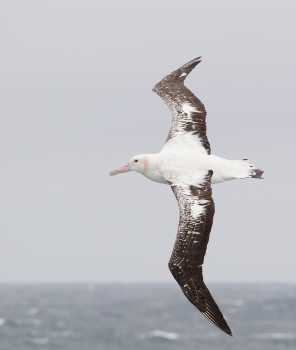Maite Louzao (Instituto Español de Oceanografía, Xixón, Spain) and colleagues have published open-access in the journal Movement Ecology on foraging strategy of the Wandering Albatross Diomedea exulans.
The paper’s abstract follows:
“How foragers move across the landscape to search for resources and obtain energy is a central issue in ecology. Direct energetic quantification of animal movements allows for testing optimal foraging theory predictions which assumes that animals forage so as to maximise net energy gain. Thanks to biologging advances, we coupled instantaneous energy-budget models and behavioural mode analysis to test optimal foraging theory predictions on wandering albatross Diomedea exulans during the brooding period. Specifically, the instantaneous energy-budget model considered the energetic balance (i.e., the difference between empirical energy gain data and modelled energy expenditure via heart rate values) along the trajectory of a given individual. Four stereotypic instantaneous behavioural modes were identified based on trajectory properties (e.g., speed and turning angle) by applying a new algorithm called Expectation Maximization Binary Clustering. Previous studies on this species have shown that foraging-in-flight is the optimal foraging strategy during the incubation period when albatrosses undertake long-distance movements but no specific foraging strategy has been determined for shorter foraging movements (e.g., brooding period).”

A Wanderer at sea, photograph by John Chardine
With thanks to Maite Louzao for information.
Reference:
Maite Louzao, M., Wiegand, T., Bartumeus, F. & Weimerskirch, H. 2014. Coupling instantaneous energy-budget models and behavioural mode analysis to estimate optimal foraging strategy: an example with wandering albatrosses. Movement Ecology doi:10.1186/2051-3933-2-8.
John Cooper, ACAP Information Officer, 30 May 2014

 English
English  Français
Français  Español
Español